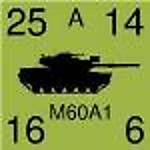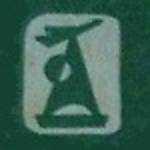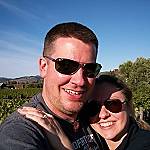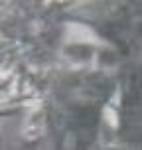World War II
Discuss WWII and the era directly before and after the war from 1935-1949.
Discuss WWII and the era directly before and after the war from 1935-1949.
Hosted by Rowan Baylis
F6F 5N ?

TopSmith

Joined: August 09, 2002
KitMaker: 1,742 posts
AeroScale: 14 posts

Posted: Monday, July 14, 2014 - 04:02 AM UTC
My father in law worked on Marine F6F 5N's in WW2. They moved from Hawaii and he couldn't bring over a 1/48th scale model of the F6F he had. he figured it wouldn't survive the move. I said I would make him a new one. I am an armor guy so I am short of some Info and figured this is where I needed to ask. I plan on building the Eduard F6F5N (unless there is a nicer kit out there.) I want to know what color to paint it. I usually use Tamiya or Modelmaster acrylics. I also am looking for the heavy card stock that has a picture of that metal planking that they covered dirt airfields with or a flight deck. I am going to make a diorama base for it. If you have any suggestions on how to make it a nicer build let me know. Thanks ahead of time.
Posted: Monday, July 14, 2014 - 07:03 AM UTC
Joel_W

Joined: December 04, 2010
KitMaker: 11,666 posts
AeroScale: 7,410 posts

Posted: Monday, July 14, 2014 - 07:50 AM UTC
The proper color the F6F-5N is Dark Sea Blue ANA 623, or FS15042 which is the same color. Model Master has it listed as #1917. Are you going with a gloss or Matt finish?
Joel
Joel

TopSmith

Joined: August 09, 2002
KitMaker: 1,742 posts
AeroScale: 14 posts

Posted: Monday, July 14, 2014 - 09:36 AM UTC
Good question. As an armor guy i would say flat with mud, rust and oil stains but... I want it to be of a Hellcat on flight ops. So what sheen should be used?
Joel_W

Joined: December 04, 2010
KitMaker: 11,666 posts
AeroScale: 7,410 posts

Posted: Monday, July 14, 2014 - 09:46 AM UTC
Greg,
For flight ops during WW11 in the Pacific, I'd go for a Matt finish with some weathering. Even new aircraft quickly showed the effects of the salt water/air, high humidity, and the tropical sun. Even today's Naval aircraft take a similar beating.
Do a few google searchers, you'll find plenty of pictures to base your model on.
Joel
For flight ops during WW11 in the Pacific, I'd go for a Matt finish with some weathering. Even new aircraft quickly showed the effects of the salt water/air, high humidity, and the tropical sun. Even today's Naval aircraft take a similar beating.
Do a few google searchers, you'll find plenty of pictures to base your model on.
Joel
Posted: Monday, July 14, 2014 - 09:46 AM UTC
mud and rust are out of the question, aircraft are made of aluminum, not steel, and never touch dirt. oily sure, and exhaust burns,like this are awesome.
But you might look into paint chipping, there are some guys here have done marvelous work with salt.
But you might look into paint chipping, there are some guys here have done marvelous work with salt.
Posted: Monday, July 14, 2014 - 09:52 AM UTC
I would recommend "satin" at the least. GSB did not fade much; most Marine F6F-5N's were well maintained and kept in good condition.
Joel_W

Joined: December 04, 2010
KitMaker: 11,666 posts
AeroScale: 7,410 posts

Posted: Monday, July 14, 2014 - 10:24 AM UTC

TopSmith

Joined: August 09, 2002
KitMaker: 1,742 posts
AeroScale: 14 posts

Posted: Tuesday, July 15, 2014 - 12:48 PM UTC
Thanks! your advice has been very helpful. Would it be fairly easy to cut open the cowl vents? I believe the 1/48 Eduard F6F 5N kit has the vents closed and parked they would probably be open and the flaps down.
Posted: Tuesday, July 15, 2014 - 08:13 PM UTC
Greg it's a common misconception that when parked the flaps should be down, for most aircraft the only time they are down is during take off or landing and when under maintenance. There are exceptions to the rule but as can be seen in the last photo above of three Hellcats parked up none have flaps deployed.
One reason you don't leave your flaps deployed is that critters see the gap as a nice new home.
One reason you don't leave your flaps deployed is that critters see the gap as a nice new home.
Joel_W

Joined: December 04, 2010
KitMaker: 11,666 posts
AeroScale: 7,410 posts

Posted: Wednesday, July 16, 2014 - 12:13 AM UTC
Greg,
Cutting the cowl flaps open and repositioning them to an open position isn't hard to do. I've done it several times on WW11. Use the finest cutting saw you have to cut into the cowl. Then carefully using a knife score across the back working from one cut to the other. Eventually you will cut through the cowl flap.
You'll notice in the 2nd picture that the open flaps almost touch each other, so you might want to cut them open in groups, then just lightly score the separation lines.
Generally after cutting out the cowl flaps and then cleaning up the flap and the cut out, the flap is now a little too small. I correct this with gluing the thinnest plastic stock I have to one side, then blend in.
Since you're a armor guy, Here's some paint color help as the instructions are usually very wrong.
Cockpit F6F-5N: ANA 611/FS 34151 Interior Green. Above the consoles on both sides were painted flat Black.
The inside of the engine cowling could be Grumman Light Gray, Interior Green, or Zinc Chromate Yellow FS 33481, as it changed respectively from one production batch to the next. Odds are if you're not sure, go with Grumman Gray.
The inside of the fuselage usually was painted Yellow Zinc Chromate FS 33481 . Very late F6F-5's with serial numbers in the 94000 range were painted Interior Green instead.
All areas of the airframe that were exposed to weather were painted Glossy Dark Sea Blue; ANA 623, which is the same color as the entire airframe. There shouldn't be any Interior Green visible on the exterior of any factory finished F6F-5N.
Joel
Cutting the cowl flaps open and repositioning them to an open position isn't hard to do. I've done it several times on WW11. Use the finest cutting saw you have to cut into the cowl. Then carefully using a knife score across the back working from one cut to the other. Eventually you will cut through the cowl flap.
You'll notice in the 2nd picture that the open flaps almost touch each other, so you might want to cut them open in groups, then just lightly score the separation lines.
Generally after cutting out the cowl flaps and then cleaning up the flap and the cut out, the flap is now a little too small. I correct this with gluing the thinnest plastic stock I have to one side, then blend in.
Since you're a armor guy, Here's some paint color help as the instructions are usually very wrong.
Cockpit F6F-5N: ANA 611/FS 34151 Interior Green. Above the consoles on both sides were painted flat Black.
The inside of the engine cowling could be Grumman Light Gray, Interior Green, or Zinc Chromate Yellow FS 33481, as it changed respectively from one production batch to the next. Odds are if you're not sure, go with Grumman Gray.
The inside of the fuselage usually was painted Yellow Zinc Chromate FS 33481 . Very late F6F-5's with serial numbers in the 94000 range were painted Interior Green instead.
All areas of the airframe that were exposed to weather were painted Glossy Dark Sea Blue; ANA 623, which is the same color as the entire airframe. There shouldn't be any Interior Green visible on the exterior of any factory finished F6F-5N.
Joel
Posted: Wednesday, July 16, 2014 - 01:11 AM UTC
Greg,
The F6F featured a spring-loaded stick which kept the flaps in position while the aircraft sat at rest. They shouldn't be dropped if you are going for accuracy. Lots of us tend to pose anything on our model that can be posed to add interest to our work, but given your father-in-law's history with the type I thought you might want to try to make it as authentic as you could.
I really like your choice of subject and kit, I built it myself as VMF(N)-541 on Ulithi featuring that great nose art in the pic Joel posted. Eduard's kit is top notch. Funny thing about Marine F6F-5N's, they had almost the exact opposite conditions of the Corsairs operating during the Solomons Campaign. The nightfighters were assigned to perform standing dusk to dawn CAP over island bases, saw little combat compared to other units, and were well maintained by their Marine operators. In contrast, the Corsairs looked like someone spilled oil everywhere and took a sandblaster to them.
Some commands even relaxed the regulations regarding nose art (not many wartime Marine aircraft had any artwork) to keep morale up at some of the more dull postings. The end result is aircraft that make really clean and attractive models, if maybe not the most challenging ones to paint and weather.
Regardless of what you choose to do with your kit, please post some pics for us to appreciate your work.
The F6F featured a spring-loaded stick which kept the flaps in position while the aircraft sat at rest. They shouldn't be dropped if you are going for accuracy. Lots of us tend to pose anything on our model that can be posed to add interest to our work, but given your father-in-law's history with the type I thought you might want to try to make it as authentic as you could.
I really like your choice of subject and kit, I built it myself as VMF(N)-541 on Ulithi featuring that great nose art in the pic Joel posted. Eduard's kit is top notch. Funny thing about Marine F6F-5N's, they had almost the exact opposite conditions of the Corsairs operating during the Solomons Campaign. The nightfighters were assigned to perform standing dusk to dawn CAP over island bases, saw little combat compared to other units, and were well maintained by their Marine operators. In contrast, the Corsairs looked like someone spilled oil everywhere and took a sandblaster to them.
Some commands even relaxed the regulations regarding nose art (not many wartime Marine aircraft had any artwork) to keep morale up at some of the more dull postings. The end result is aircraft that make really clean and attractive models, if maybe not the most challenging ones to paint and weather.
Regardless of what you choose to do with your kit, please post some pics for us to appreciate your work.

TopSmith

Joined: August 09, 2002
KitMaker: 1,742 posts
AeroScale: 14 posts

Posted: Thursday, July 17, 2014 - 07:07 AM UTC
Thanks for your help1 The Eduard kit, the PSP decking and the testers paint are on the way. However what would Grumman Gray look like? I may already have a similar color.
Joel_W

Joined: December 04, 2010
KitMaker: 11,666 posts
AeroScale: 7,410 posts

Posted: Thursday, July 17, 2014 - 07:45 AM UTC
Greg,
Grumman Gray is very close to FS 36440 Light Gull Gray. Just about every line of model paint has that color. Tamiya Acrylics is a simple mix. FX-20 FX-2 in equal parts.
Joel
Grumman Gray is very close to FS 36440 Light Gull Gray. Just about every line of model paint has that color. Tamiya Acrylics is a simple mix. FX-20 FX-2 in equal parts.
Joel

TopSmith

Joined: August 09, 2002
KitMaker: 1,742 posts
AeroScale: 14 posts

Posted: Saturday, August 02, 2014 - 05:52 AM UTC
Wheel wells, Grumman gray or interior green?

Jessie_C


Joined: September 03, 2009
KitMaker: 6,965 posts
AeroScale: 6,247 posts

Posted: Saturday, August 02, 2014 - 06:41 AM UTC
If you're doing an overall blue aircraft, they were blue, too. In fact, everything but the tires is blue, which saves on the masking tape 


TopSmith

Joined: August 09, 2002
KitMaker: 1,742 posts
AeroScale: 14 posts

Posted: Saturday, August 02, 2014 - 11:52 AM UTC
Blue landing gear and hubs?
Joel_W

Joined: December 04, 2010
KitMaker: 11,666 posts
AeroScale: 7,410 posts

Posted: Saturday, August 02, 2014 - 01:04 PM UTC
Quoted Text
Blue landing gear and hubs?
Yes. Everything that was exposed to the elements were painted.
Joel

TopSmith

Joined: August 09, 2002
KitMaker: 1,742 posts
AeroScale: 14 posts

Posted: Saturday, August 02, 2014 - 03:47 PM UTC
Roger- Wilco 


TopSmith

Joined: August 09, 2002
KitMaker: 1,742 posts
AeroScale: 14 posts

Posted: Sunday, August 31, 2014 - 03:30 AM UTC
Well I,m back. The kit has gone together well. The photo etch for the interior was extensive but I persevered! If you build the kit in the future, carefully plan how you will assemble the main landing gear. I would begin by first gluing on the main landing legs and assembling the parts from the closest to where the legs are glued and work you way out. Now I am putting on the radar dome and the fit is terrible. It is obvious the part was originally designed for another kit. This is going to take quite a bit of filler. Anyone have a better solution? 

Posted: Sunday, August 31, 2014 - 04:03 AM UTC
Sculpting joint filler is part of the game. Have at it. 


Scrodes

Joined: July 22, 2012
KitMaker: 771 posts
AeroScale: 763 posts

Posted: Sunday, August 31, 2014 - 04:37 AM UTC
Quoted Text
Paul is more right then I was, as I was thinking more in terms of carrier ops.
Here's a few pictures of F6F-5Ns. You can see some dirt and grime, but generally no paint fading.
Joel
There isn't MUCH fading, but there is definitely fading - look at the cowl of the closest machine, you can see an old stencil number because the paint underneath was protected and is still darker. Also the paint on all the machines has a good patina and is now flat instead of glossy.
I weather GSB by postshading a little bit and then in the same random pattern you would usually spray a faded blue, I do that with clear flat over a lightly faded GBS that has been covered in a satin clear coat.

TopSmith

Joined: August 09, 2002
KitMaker: 1,742 posts
AeroScale: 14 posts

Posted: Sunday, August 31, 2014 - 08:34 AM UTC
I was thinking of covering the wing in seran wrap then put the putty on the radar dome and then pushing the dome into place. That way I can closely fit the putty without getting it on the wing. I am trying not to make a mess of the wing and having to sand off details. When the putty dries I can remove the dome and clean off the edges. Any warnings or heads up ahead of time?
Posted: Sunday, August 31, 2014 - 09:06 AM UTC
I didn't have trouble with the radome on my kit, i just attached it and filled the edge with thick CA. Mine fit well enough I attached it after paint and decals. The guns were a different story for me, i ended up cutting the barrels off and attaching them one by one from the outside.
I don't see why your idea wouldn't work as long as you let the putty set before you remove the saran wrap.
I don't see why your idea wouldn't work as long as you let the putty set before you remove the saran wrap.
 |
















